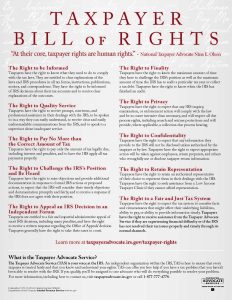Paying a lot for tax preparation? Paying a CPA, Enrolled Agent, attorney or other professional to prepare tax returns does not have to be expensive. Hiring an expert may be a good idea, and most of the fees are money well spent. However, some habits could be costing you a lot of money, and they could lead to errors. What are these habits?
- Disorganization
- Inadequate Records or sloppy bookkeeping
- Unresponsiveness
This is how those habits cost you and what you can do about them.
Disorganization
At tax time many people simply gather up any documents they think might somehow be related to their income tax, stuff them in folders or large envelopes, and send them to their CPA. The tax preparer will review and make copies of everything. Many of the documents will turn out to be unnecessary. Even so, once their CPAs start going through the files, they find that many important items are not included. The CPA will then have to contact the client and ask for the missing documents. This adds to the expense of preparing the return because the accountant spends additional time and expense on the unnecessary items and the spends extra time tracking down the missing items. Ask your CPA or tax professional for an organizer or checklist.
Inadequate Records or Sloppy bookkeeping
The IRS requires taxpayers to document income and expenses. Without documentation, the IRS will disallow many deductions or credits. If you worked and received a salary or wage, then your income and any withholding will be documented by your employer with a W-2. If you were a contractor, then you will receive a Form 1099-MISC if you were paid more than $599 during the year.
Income from banks or brokerage accounts will be documented with various 1099s for interest, dividends, or capital gains.
On the expense side, individuals may be able to deduct charitable contributions, interest, some, medical expenses, and many other things. Depending on the expense, you will have received some sort of document explaining the expense.
If you own a business, you will also have to document your income and expenses. Many businesses hire bookkeepers to keep track of their income and expenses. If you go this route, about all you should need to provide your CPA or tax professional is a copy of your financial statements. Your accountant may also ask you for copies of bank records. If you take credit cards or receive 1099s, your tax professional will also ask to see copies of those.
If your business finances are simple, you may be able keep your records on a spreadsheet. If you use this approach, group your expenses by logical categories so that your tax preparer will be able to know how to put them on the tax form.
Unresponsiveness
Many clients do not respond when their accountant tries to contact them. The reason the accountant is calling is either to find missing information or to clarify something that is not clear. Unresponsiveness increases the cost of preparing your return because it is difficult to work with missing information and it takes longer to prepare the return. In addition, every one of those phone calls and emails take time.
Change your habits!
Now that you know about these habits that cost you money, you can start changing your behavior.
Get organized!
Talk to your CPA or the professional that prepares your filing. He or she can tell you exactly what you need to do in order to simplify your tax filing and to make it less expensive to prepare your return. Take advantage of the checklists and organizers your accountant provides. Spend a little time reviewing your documents before you take them to your accountant.
Keep records throughout the year, and organize them so that they will be ready for your accountant. If you drive an automobile for work, get one of those auto record books and keep it. Your CPA may be able to provide you with an expense log. Keep your business and personal records separate.
Get help with your records.
It is worth your time to talk to your CPA or to a bookkeeper to learn how to set up your records. If you have a small business, seriously consider purchasing bookkeeping software. If you do, it is worth your while to ask your accountant or bookkeeper to help you set up your books. If you don’t want to organize your own records, or if they are too complex, then hire a bookkeeper. The cost of paying a bookkeeper to do your books throughout the year will be less than the cost of asking your accountant to do it a month before your taxes are due.
Return your calls! Respond to email!
When the CPA calls or emails, assume it is important and respond! If you do not return your calls or answer your email, then one contact becomes two or three or more. Your CPA will be able to complete your return faster and for less cost if you respond when he or she tries to contact you.



